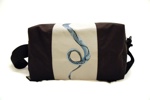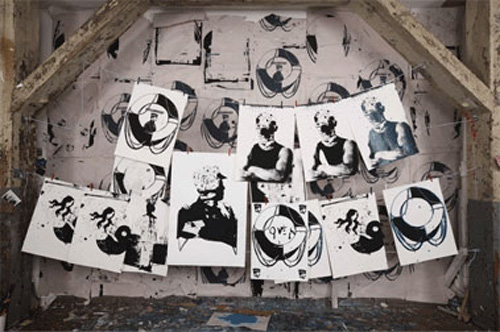Interview: Joseph Ari Aloi aka JK5
The artist reveals his secret for creating a great tattoo, his new book and more

by Hugh Hart
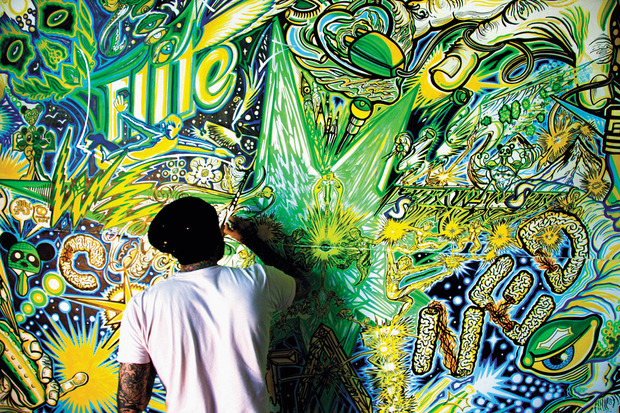
Joseph Ari Aloi graduated from Rhode Island School of Design in 1994 armed with dozens of sketchbooks, self-described ADD, a set of tattoo implements and a headful of eye-popping mythologies inspired variously by Star Wars, Sanskrit calligraphy, Jean-Michel Basquiat, Jackson Pollock and Viking iconography. Working as a tattoo artist, Aloi (aka JK5) propagated his ornate letterforms by word of mouth, forearm, back and bicep, then expanded into fine art, product design and advertising assignments for clients like Nike, kidrobot and Wieden + Kennedy. All along the way, Aloi documented his creative process in the pages of color-drenched sketchbooks crammed with doodles, rough drafts, prototypes and stream-of-consciousness typography.
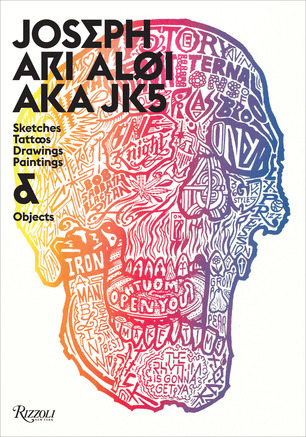
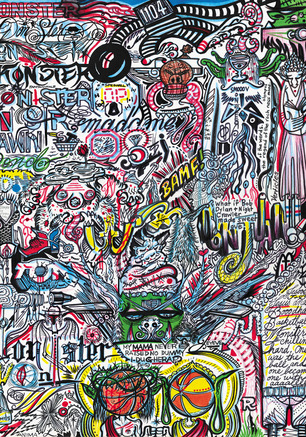
Published by Rizzoli, “Joseph Ari Aloi Aka Jk5: Sketches Tattoos Drawings Paintings & Objects” collects pages from the notebooks along with finished fine art pieces, fashion objects, plastic vinyl toys, scratch cards and everything in between. At the Brooklyn home he shares with wife and two young kids, Aloi spoke with CH about the method behind his visually intoxicating madness.
I like the alignment of the heart and the hand and the brain and the direct connection to the paper.
What role do sketchbooks play in your creative process?
Sketchbooks are where everything begins and ends for me. It’s daily documentation where I practice and develop my letterforms, fonts, iconography and ideas. I like the alignment of the heart and the hand and the brain and the direct connection to the paper. I’ve been one with that, ever since I was able to hold an implement when I was five years old.

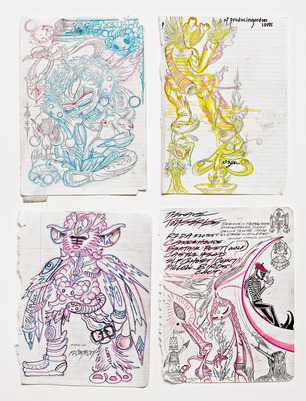
How does the dynamic play out between your private drawings and the work you share with the public?
The sketchbook is its own process and often a finished page might become finished work that I tear out and frame and present individually, or else it might sacrificed at the altar of extraction for new de-construction or new re-assimilation for new work. The sketchbooks are about evolving the forms. Maybe they manifest themselves by going into a tattoo design or a series of paintings, or fine art or prints, but it’s always about creating products.

I think multidisciplinary artists are a product of a cultural zeitgeist and generational reality.
You move in such a fluid way between different media—from paintings to tattoos, toys, Star Wars trading cards, scratch books, advertising illustrations. Do you see these projects as part of a single creative platform?
There are very few surfaces that are safe within distance of me that I won’t attack or transform. My ADD and ADHD and hyper-activity in general, combined with this insatiable curiosity, means I like mixing it up. I think multidisciplinary artists are a product of a cultural zeitgeist and generational reality. Raised in the late ’70s and ’80s with hip-hop and graffiti—I was a breakdancer and athlete and drawing all the time, so art-making has become a real sport for me. And there are so many surfaces to transform.
How do you delineate between work-for-hire and personal projects?
I’m not a fan of boundaries or definitions. For me, everything’s subject to transformation or personalization either internally or in the outside world. Whether it’s an assignment or commission or personal work—it’s going to happen first in the sketchbook. A lot of products in the book (like the Flowbot and the basketball droid and the commissioned illustrations for Weiden + Kennedy) got worked out in sketchbooks and then I just switched media and translated them for the final result.
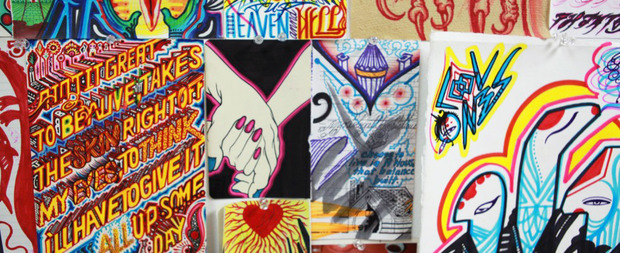
Whatever the final format, your work incorporates a hyper-vivid array of colors. How do you use color so telling through your imagery?
I see color as a vehicle for a deep, symbolic kind of communication where you start with these very basic ideas of what red, orange, yellow, green, blue or violet could mean in the world. Take the color green for example; you can list chlorophyll, you think about fertility, spirit life in the natural world that you read about in ancient civilizations as opposed to the West. There’s money, there’s trees, there’s marijuana—so much information. For me, color is a way of dissolving language and re-creating with word sculpting. The colors I choose have a code, their own system of communication inside the color, a combination of what’s biological, what’s scientific and what’s spiritual and creative and imaginative.
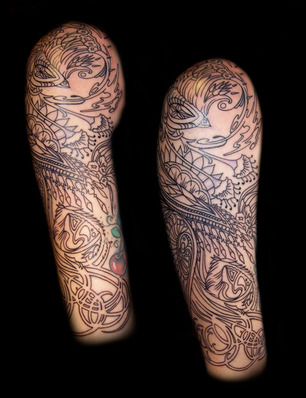

Do you think about color theory when your figuring out the palette for a given piece?
I used to have this very awkward sensibility when it came to color. Then I stopped trying to adhere to proper color theory or the right complements, the tertiary colors, all that academic way of thinking, and decided to say “fuck it” and go really free with it. That’s when the colors found their way into the right kind of contrast and impact. When I render something, colors represent the internal life or spirit of the piece.
What’s your secret for creating a great tattoo?
With tattoos, you design for living, breathing human form and musculature, so I like to put the letterforms on an oblique angle to make it flow. I want the design to have a life on skin as opposed to something static and stationary that’s arbitrarily placed in a very straight horizontal way. I’ve always approach tattoo work with an athleticism in mind. It’s physically exhausting! But when you’ve been tattooing for 20 years and you haven’t stopped drawing for 35 years, it all feels very natural. It’s all about applied energy and movement.
“Sketches Tattoos Drawings Paintings & Objects” is available from Amazon for $33.
Images courtesy of Joseph Ari Aloi
